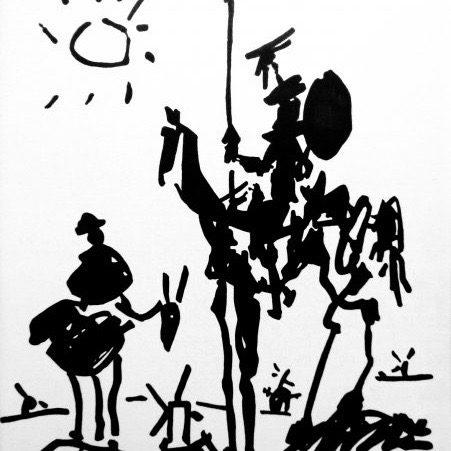
Seville was probably our favourite city; warm, colourful, lively, fascinating! It probably helped, of course that we were there for Feria, the festival of flamenco dancing and music. The streets were full of women and girls in flamenco dresses, and men in their caballero outfits, many on horseback. Horse-drawn carriages trundled by constantly, carrying revellers to and from the Feria grounds. This is the fun side of flamenco. We also went to a traditional flamenco performance, which is an altogether more serious affair, passionate and dramatic, evoking the tragedy of its origin.
The Seville orange, as expected, is the emblem of the city, and most of the streets are planted with orange trees, as are the courtyards of the cathedral and the Alcazar, a palace complex dating back 2000 years, brought to magnificence by the Moorish rulers, only to be rebuilt in opulent Christian style 500 years ago, when the Moors were conquered.
The cathedral, apart from its stupendous medieval architecture, also contains a massive gold altar-piece, a trove of other marvellous art works and the tomb of Christopher Columbus! Built between 1400 and 1500, on the site of what must have been a magnificent mosque (built in the 1100s), it is the largest gothic cathedral and the third largest church in the world. The Giralda, which was the minaret of the mosque, and is now the bell tower, stands over 100 metres high and has no stairs, but a spiral ramp to the top.
The other outstanding historical site in Seville is the Alcazar, or Reales Alcázares de Sevilla, a Moorish palace and gardens, in the mudejar style, built between the 11th and 16th centuries on the site of a 1st-century building, probably an early Christian basilica. It comprises seven hectares of gardens and seventeen thousand square meters of buildings!
We stayed in a charming little hotel, the Casona de San Andres, which was once a sumptuous family villa, built around two enclosed courtyards, right in the heart of the old city.
We dined very well, and decided to concentrate on tasting Spain’s rosados (rosés), which were without exception, splendid! We also fell easily into the habit of a refreshing glass of the local beer at lunch, and rediscovered the joy of vermouth. Quite a few glasses of Pedro Ximinez sherry were sipped after dinner; the nectar of the gods!
One memorable meal was at a restaurant called El Rinconcillo, which has been in operation since 1670!
Another attraction not to be missed is the Plaza d”España, site of the Ibero-American Exposition in 1929.
Here’s a little sample of proper flamenco!
https://www.youtube.com/watch?v=XNhfV_53W7A






















